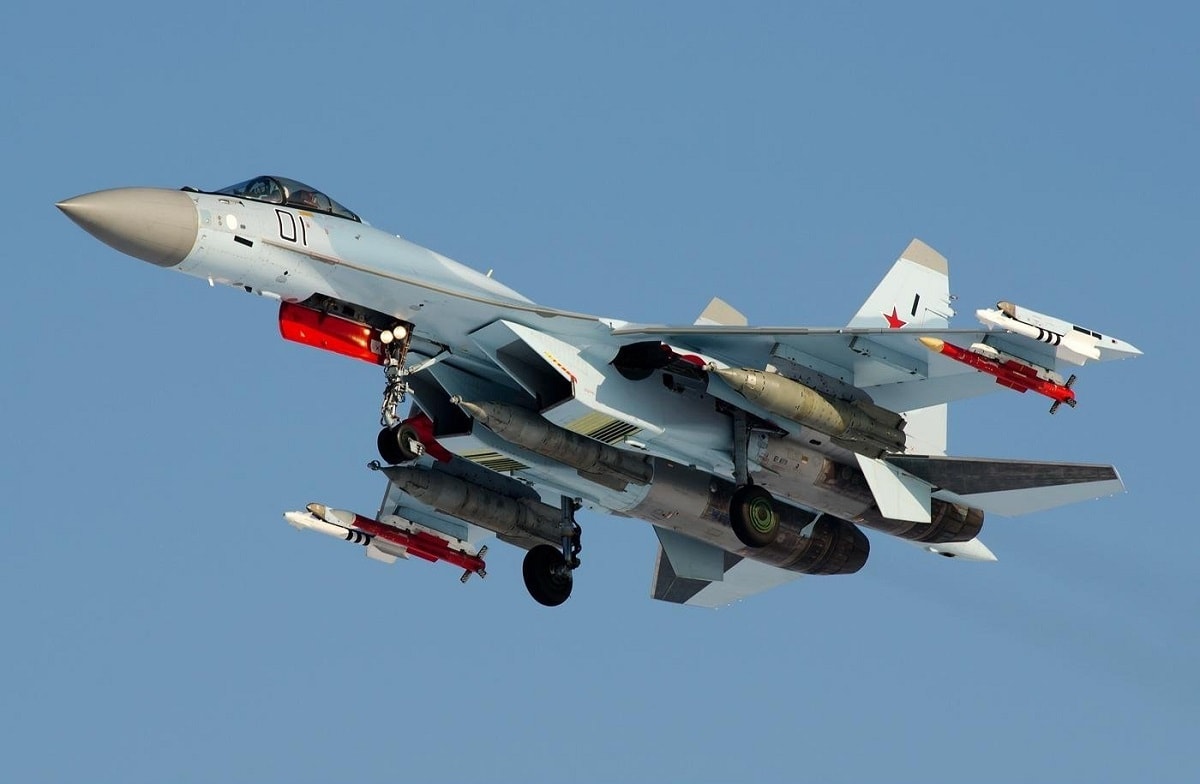Sure, the Su-35 is not a stealth fighter. But she is really tough: Russia is flexing its muscles and expanding its influence in the Middle East by selling Su-35 fighter jets to Egypt and Turkey, while Algeria may buy the Su-35 too. This is happening as the United States has abandoned Afghanistan and is setting its sights away from the Middle East and is instead focusing on East Asia as a potential conflict zone. Russia is thus matching the United States in its use of “fighter jet diplomacy” to make more friends and potential client states in the Middle East.
Su-35 Diplomacy?
Analysts of the Middle East military balance have said that Russian fighter jet sales are leading to the Kremlin’s increased influence and power in the region. Earlier this year Russia delivered five SU-35 airplanes to Egypt and the Egyptians expect to receive 19 more. Turkey plans to buy the Su-35 if talks are successful. The same with Algeria. The Algerians will already be receiving 14 Sukhoi-34 bomber jets in 2021. They are reportedly interested in the advanced Su-57 fighter, and if rebuffed by the Russians for that airplane, they could instead order the Su-35.
One Dangerous Plane
The Sukhoi Su-35 Super Flanker has been a Russian workhorse since 2014. It has diverse uses and capabilities. It can destroy targets in the air, on sea, and on the ground. It has a 190-mile range and 59,000 feet ceiling. The U.S. Navy is worried about its Oniks anti-ship cruise missiles that the Su-35 can fire. The Su-35 can carry up to eight tons of numerous grades of missiles and laser-guided and satellite-guided bombs.
Although still considered a fourth-generation fighter without stealth capabilities, the Su-35 has ample dexterity and agility with better avionics than the Su-27. The radar has been improved and the plasma ignition engines have more thrust compared to the Su-27. The max speed of the Su-35 is 1,550 miles per hour.
The sale of Su-35s in the Middle East is another example of what I call fighter jet diplomacy that both the Russians and Americans are engaging in. When the United States refuses to sell its F-35s to one country, that country’s air force will naturally look to another source of supply – in this case Russia. Alternatively, Israel has taken notice and now has 27 F-35s from the United States. The United Arab Emirates wants F-35s, but the Biden Administration has been cagey about completing the sale by announcing the purchase at first and then temporarily freezing it later.
Of course, the stealth F-35 is superior to the fourth generation Su-35, but for countries such as Turkey, Egypt, and potentially Algeria, the Russian fighter is a welcome addition. With the United States out of Afghanistan, the security balance is changing in the Middle East and North Africa. Russia is creating arms clients in the region, and this is similar to its arms transfers that it conducted during the Cold War. However, Russia is not sending thousands of troops to the Middle East, and it also airlifted all of its personnel out of Afghanistan too, so Russian influence in the region should not be over-stated.
But like the United States, Vladimir Putin is engaging in fighter jet diplomacy. The Kremlin is making friends by exporting its weapons systems and creating more headaches for U.S. allies such as Israel, the United Arab Emirates, and Saudi Arabia. The Su-35 is another bargaining chip for fighter jet diplomacy. What airplane could be next on the sales block? The Kremlin reportedly wants to sell its fifth generation, stealthy Su-57. The Russians will deploy 22 Su-57s by 2024. With a cost of $40 million apiece, Russia would like to pay for the airplane by exporting it. Since Russia is already selling the Su-35 to clients in the Middle East, it stands to reason that the Su-57 would be next. This could force the United States to consider more F-35 sales to keep up with the Russians and continue its own fighter jet diplomacy in the Middle East.
Brent M. Eastwood, PhD, is the author of Humans, Machines, and Data: Future Trends in Warfare. He is an Emerging Threats expert and former U.S. Army Infantry officer.

